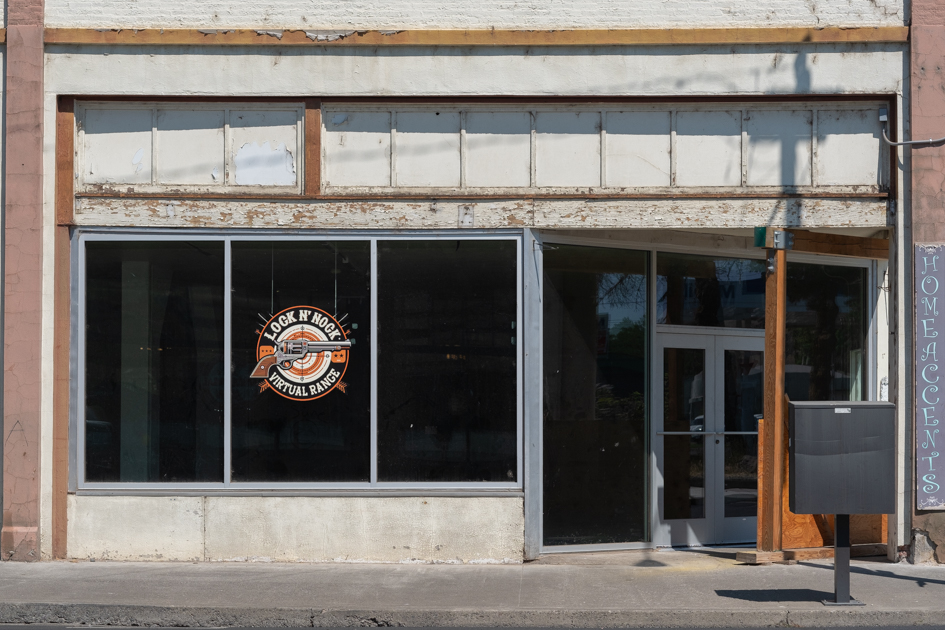Supply chain problems, high prices linger
Published 7:00 am Thursday, March 16, 2023
FRUITLAND, Idaho — A hard-won radiator made farmer Ron Mio almost as happy as a bumper crop.
At his Fruitland, Idaho, shop, his son, Chris, installed it in a loader tractor in January, four months after the old one failed and he placed an order with an agricultural equipment dealer for its replacement.
Trending
“It was not immediately available through a dealer,” Mio said. “This one came from a local radiator shop with connections to aftermarket parts.”
Experts say the supply-chain delays like those Mio faced, combined with tight inventories and high prices that hit the agricultural equipment and input markets amid COVID-19 disruptions, show signs of easing this year.
Price pressures ease
The Producer Price Index for Agricultural Machinery and Equipment was up 12.1% in January compared to a year earlier, but over the past three months it has started to decline, said Doug Robison, Idaho president for AgWest Farm Credit.
“This suggests some easing of price pressures in the sector despite large order backlogs for some types of equipment,” he said.
While still high, the price index for nitrogen fertilizer manufacturing dropped by 4.6% this January compared to a year ago.
Trending
However, that is coming off a dramatic run-up. From January through April 2022, nitrogen fertilizer had increased by a record 131%, Robison said.
“Dependency on foreign markets remains a significant issue, and prices remain elevated well above historical levels,” he said.
Agricultural producers historically get their strongest real returns when inflation is above 5%, “and the agricultural sector is strong despite record input cost increases over the past few years,” said Robison, who is based in Twin Falls.
As inflation starts to ease, however, net profit margins for agricultural producers will begin to shrink, prompting some reduction in equipment prices and input costs, he predicted.
‘Challenging years’
For fertilizers and some other inputs, “in general, we have come off probably two of the most challenging years from a supply and logistics standpoint over my 20-year career,” said Richard Lloyd, Valley Agronomics general manager. “I don’t remember a time when it was so challenging to get product.”
However, he said he is optimistic that picture will improve.
“Many of the manufacturers have realized they can’t manufacture just in time for the season,” Lloyd said. Most are “more proactive this year, and there is more product in the pipeline.”
As of late January, about 65% of farmers in southwestern Idaho and southeastern Oregon had purchased all of their inputs or committed to do so, said agronomist and agricultural consultant Michael Navarrete, who owns Fruitland-based The Soil Doc. That is about average, he said.
Equipment sales down
In the meantime, overall U.S. tractor sales fell by about 15% last year, said Curt Blades, Association of Equipment Manufacturers senior vice president of industry sectors.
Sales of tractors below 40 horsepower dropped by about 20%, and sales of those between 40 and 100 horsepower dropped 11%.
Larger tractors offered the lone bright spot. Unit sales of those above 100 horsepower increased by 11%.
Sales of tractors above 100 horsepower “are holding strong and increasing in demand,” Blades said. “Compacts and subcompacts are a concern.”
Last year’s overall decline returns the industry to its five-year average in unit sales, he said.
In 2020, tractor sales were “very solid,” Blades said. The next year, 2021, they hit a record high, with smaller units selling especially well both years.
Coming off the previous two strong years, demand for small tractors “has kind of been met,” he said. “The small-tractor market tends to be reflective of the overall economy, and we know there are some storm clouds.”
Continued growth in large tractor sales reflects overall optimism in the agricultural economy, Blades said.
“That was the story of 2022, and it sort of looks like it’s going to continue on the ag side given prospects for commodity prices and net farm income holding up the next two years,” he said.
If the overall agriculture economy is positive, “we certainly would expect ag equipment sales to be positive, too,” Blades said.
Prices are increasing, too. Factors driving higher equipment prices include cost increases for steel, electronics, labor and transportation, he said.
Farmers tend to keep their tractors a long time, Blades said.
The average tractor on a farm is 7 to 8 years old — up slightly from 20 years ago, he said. Nevertheless, farmers are updating equipment when it makes economic sense, “and because of economic and supply-chain issues, people are very confident of their needs, planning three to five years in advance.”
Supply a factor
“Technology is changing, so farmers try to keep up with the technology,” said Dan Capron, equipment sales specialist with Agri-Service in Fruitland.
For example, he sees demand for tractor technology that provides “a value that can be seen by the farmer. Fuel efficiency is a huge example,” he said.
One 300-horsepower tractor that his company sells is getting a 9% to 15% increase in fuel efficiency over several competitors’ similar models, Capron said. “They keep improving on it.”
Leasing, which can be a good option for a farmer who wants to keep a tractor for three to five years, has increased, he said. It becomes more popular as equipment prices rise.
For example, a compact tractor that sold for $15,000 to $16,000 two years ago now costs $19,000 to $20,000, Capron said.
Availability will continue to be tight this year, he said in late January.
“If you buy a new tractor today that is not in production, depending on the model, (delivery) could be fall 2023 or spring 2024,” Capron said. “I believe 2024 is going to be a lot better for equipment coming in.”
Staying current
The delivery delays could interfere with farmers who try to keep their equipment current.
Blackfoot-area farmer Doug Evans said his family’s farm — which has seven tractors, all equipped with GPS technology — tries to trade in the oldest one each year. Ideally, the oldest is seven to eight years old.
“We try to keep all of our equipment new enough that it’s reliable, and so we can get parts and service,” he said.
Reliability and having backup machines are also important at Kuenzi Turf and Nursery in Salem, Ore., where sod cutting starts early and deliveries run on a tight schedule each day, general manager Tyler Kuenzi said.
“Customers are OK if periodically our machinery breaks down, but we know we can’t rely on that,” he said. “We have committed that (reliability) to our customers.”
The business early this year looked to replace its primary sod machine, which is two to three years old. Ideally, the first in the lineup is two to five years old, the second eight to nine, Kuenzi said. The third, a backup, is older and kept longer.
Nursery machines are also replaced or added regularly, he said. Many are smaller, simpler and older. All are well maintained.
Back at Mio’s farm shop near Fruitland, he said that when GPS was still new, he traded machines after 1,500 to 2,000 hours of use, down from about 3,000. As his farm has grown, some trades are for bigger equipment that can work more rows in a single pass — such as the new field cultivator, an implement, he ordered in November 2021 but has yet to receive.
“We kind of anticipate our needs and hope we can pay for it when it gets here,” Mio said.









